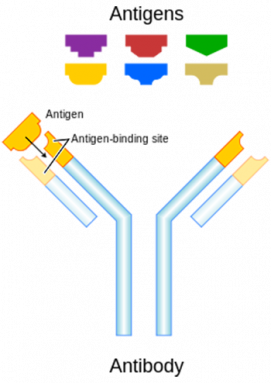Explainer: What is a vaccine?
Vaccines imitate infections to prevent illness

Most vaccines are given through injections, but some can be given by nose or mouth.
Remains/iStockphoto
The immune system is the body’s natural defense against germs. When a germ invades, the immune system‘ sends special cells to fight it off. Sometimes, though, the immune system is not naturally strong enough to prevent a disease from seriously harming someone or even killing them. But there’s a way to give the immune system a boost. It’s known as a vaccine.
Vaccines are substances that prepare the immune system to fight a disease-causing germ or another pathogen by imitating an infection. They trick the immune system into making a “memory” of that germ without ever having to fight the real germ in the first place. Now, when the immune system encounters the real pathogen — whether it’s a virus, bacterium or other microbe — it is ready to attack it. As a result, the vaccinated person doesn’t get sick.
Before vaccines, many children suffered from debilitating — and killer — illnesses such as measles, polio, smallpox and diphtheria. A simple scratch could be deadly if it became infected with the bacteria responsible for tetanus (or “lockjaw”). Vaccines, though, have changed this. Smallpox is completely gone from the world, and polio nearly so. Outbreaks of measles and diphtheria are rare, especially in the United States. Tetanus infections continue to decline worldwide.
Vaccinations also can help protect people who can’t be vaccinated. These might be babies who are too young to receive a vaccine. Or there might be people who are too ill or too old to be vaccinated. When enough people in a community are vaccinated against a particular contagious disease, there’s little opportunity for that disease to spread from person to person. Doctors call this type of community protection “herd immunity.”
How vaccines work
The body is designed to fight off foreign invaders, such as germs. To do this, it needs to be able to distinguish elements of itself from outside agents (nonself). This is the immune system’s job — to recognize self from nonself. To achieve this, the immune system is always on the lookout for evidence of foreign stuff, or what scientists refer to as antigens.

Pathogens are covered with tiny particles. Since they look unfamiliar to the human body, the immune system calls out its antigen attack squads. Those antigens are specific to a particular germ. A flu virus and a measles virus, for instance, have different antigens. Even two different types of flu viruses may contain somewhat different antigens.
So when a pathogen enters the body, the immune system dispatches special molecules — antibodies. These Y-shaped proteins patrol for particular antigens. When they find the ones they are trained to deal with, the antibodies go to work. They have two jobs. One is to disarm the threat by locking onto the antigens. This stops the germs from doing further harm. The antibodies also signal other immune cells to come to the site of the infection. Those other immune cells destroy the germs and remove them from the body. This entire process can take several days from the first time the body encounters a new type of germ.
Once an infection goes away, however, it won’t be forgotten. The immune system has stored a “memory” of the pathogen’s antigens in what are called B cells. These memory cells make antibodies designed to recognize and lock up the antigens for that specific germ. So if the same germ enters the body again, these new antibodies can now recognize it right away. They can direct the immune system to destroy and remove the germ from the body before it multiplies and forms an infection.
This protection against previous illnesses is called immunity. And it’s why a child who had chickenpox as a child won’t ever come down with that illness again.
One way to build immunity is through infection. A person who survives Ebola, for instance, will never suffer through that disease again. But since infection can damage or kill someone, the second way to build immunity — with a vaccine — is the safer option when it is available. (Scientists haven’t yet developed vaccines against every disease. Ebola is one disease for which no vaccine yet exists.)
Some vaccines are made from a weakened form of a disease-causing germ. Others are made from dead or deactivated forms of the germ. Most vaccines are given by injection. Some can be given by mouth or as a nasal spray.
The vaccine won’t cause disease, because the weakened germ can no longer copy itself to release new germs inside the body. The immune system, though, doesn’t know that the germ’s mimic (or vaccine) is weakened or dead. All it sees are the antigens signaling a now-familiar invader. It sends antibodies and other immune cells to stop and destroy the invader. The antibodies “remember” the germ. This creates immunity against future infections with the same type of germ.
Some antibodies protect for a lifetime. Other times, the immune system’s memory of a germ can fade over time. When this happens, immunity can falter and leave a person vulnerable to infection. In these cases, the immune system needs a reminder. These reminders are called boosters. Tetanus is an example. Doctors recommend a tetanus booster every 10 years to maintain good immunity against the disease.
Some germs also change substantially over time — evolve — creating new antigens. Influenza viruses are well known for doing this. Now the old antibodies may no longer recognize the new form of the germ (and antigens) and therefore fail to protect against it. That’s why flu vaccines must be given every year. Each new vaccine deals with the latest versions of these ever-changing viruses.







